
Human activities are destroying the natural world, leading to the extinction of animal and plant species at a terrifying rate.
Our actions threaten over one million species. And in New Zealand we have the highest proportion of threatened native species in the world, with more than 4000 at risk.
Some experts believe we are in the throes of the sixth mass extinction. In This Is How It Ends, a seven-part Stuff documentary series, Andrea Vance and Iain McGregor investigate the biodiversity crisis.
On the edge of survival are seabirds, including black petrels and our unique penguins.
Made with support from

In partnership with

WATCH EPISODE ONE:
SEABIRDS
READ MORE
SEE MORE







New Zealand is a stronghold for penguins, with more species on our shores than anywhere else in the world.
New Zealand is a stronghold for penguins, with more species on our shores than anywhere else in the world.

There are only 250 shore plover left in the world.
There are only 250 shore plover left in the world.

A Chatham Petrel/ranguru chick. They are endangered but numbers are increasing.
A Chatham Petrel/ranguru chick. They are endangered but numbers are increasing.

An eastern rockhopper penguin leaps to safety on the Auckland Islands. Experts fear they will be extinct in coming years.
An eastern rockhopper penguin leaps to safety on the Auckland Islands. Experts fear they will be extinct in coming years.

Black petrels/takoketai are the seabird most at risk from commercial fishing bycatch.
Black petrels/takoketai are the seabird most at risk from commercial fishing bycatch.

A yellow-eyed penguin/hoiho tiptoes past sleeping sea lions on Enderby Island.
A yellow-eyed penguin/hoiho tiptoes past sleeping sea lions on Enderby Island.







There are only 250 shore plover left in the world.
There are only 250 shore plover left in the world.

New Zealand is a stronghold for penguins, with more species on our shores than anywhere else in the world.
New Zealand is a stronghold for penguins, with more species on our shores than anywhere else in the world.

A Chatham Petrel/ranguru chick. They are endangered but numbers are increasing.
A Chatham Petrel/ranguru chick. They are endangered but numbers are increasing.

An eastern rockhopper penguin leaps to safety on the Auckland Islands. Experts fear they will be extinct in coming years.
An eastern rockhopper penguin leaps to safety on the Auckland Islands. Experts fear they will be extinct in coming years.

Black petrels/takoketai are the seabird most at risk from commercial fishing bycatch.
Black petrels/takoketai are the seabird most at risk from commercial fishing bycatch.

A yellow-eyed penguin/hoiho tiptoes past sleeping sea lions on Enderby Island.
A yellow-eyed penguin/hoiho tiptoes past sleeping sea lions on Enderby Island.
We are at crisis point. Unfortunately, the way we feed and fuel our 21st century lifestyle is unsustainable, we have fundamentally changed the planet. And it’s completely getting out of balance.







Hoiho are declining in numbers and considered endangered.
Hoiho are declining in numbers and considered endangered.

A pair of courting South Royal albatross on Enderby Island, in the Auckland Islands.
A pair of courting South Royal albatross on Enderby Island, in the Auckland Islands.

Penguins on the Snares Islands use a giant rock slide to enter the Southern Ocean.
Penguins on the Snares Islands use a giant rock slide to enter the Southern Ocean.

A Salvin’s albatross chick on the Bounty Islands.
A Salvin’s albatross chick on the Bounty Islands.

Salvin’s albatross are nationally critical, classified among the most severely threatened species and facing an immediate high risk of extinction.
Salvin’s albatross are nationally critical, classified among the most severely threatened species and facing an immediate high risk of extinction.

Penguins face a number of threats, including human disturbance, predation, disease and the warming climate.
Penguins face a number of threats, including human disturbance, predation, disease and the warming climate.







Hoiho are declining in numbers and considered endangered.
Hoiho are declining in numbers and considered endangered.

A pair of courting South Royal albatross on Enderby Island, in the Auckland Islands.
A pair of courting South Royal albatross on Enderby Island, in the Auckland Islands.

Penguins on the Snares Islands use a giant rock slide to enter the Southern Ocean.
Penguins on the Snares Islands use a giant rock slide to enter the Southern Ocean.

Salvin’s albatross are nationally critical, classified among the most severely threatened species and facing an immediate high risk of extinction.
Salvin’s albatross are nationally critical, classified among the most severely threatened species and facing an immediate high risk of extinction.

Penguins face a number of threats, including human disturbance, predation, disease and the warming climate.
Penguins face a number of threats, including human disturbance, predation, disease and the warming climate.

A Salvin’s albatross chick on the Bounty Islands.
A Salvin’s albatross chick on the Bounty Islands.
OTHER EPISODES
Episode 2
Native Birds
now
Episode 3
Oceans
Oct 20 Watch
now
Episode 4
All creatures great and small
Oct 22 Watch
now
Episode 5
Fresh Water
Oct 26 Watch
now
Episode 6
The Endangered Forest
Oct 27 Watch
now
Episode 7
The Islands
Oct 28 Watch
now

Getting to the truth takes patience and perseverance. Our reporters will spend days combing through documents, weeks cultivating delicate sources, and months - if not years - fighting through the Official Information Act, courts and red tape to deliver their stories.
By supporting Stuff you'll help our journalists keep the pressure on. Make a contribution from as little as $1 today.


